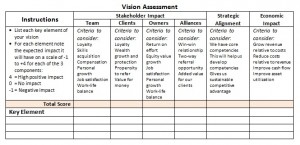Peter Drucker once wrote: “So much of what we call management consists in making it difficult for people to work.” That’s a pretty damning indictment of management but it may be close to the truth.
When I was young and silly at university, I took a class in management and was taught the role of management was to engage in planning, decision making and control. During most of the time I worked for a “boss” my sense was s/he also learned that’s what managers do. It never occurred to me at the time, but if that’s what managers do then what do the people who report to them do?
Answer: they do what they’re told. And if they never aspire to a management role then they learn to become very good at doing what they’re told to do. To put that another way, they don’t plan, they don’t make decisions and they work within predefined and often possibility-limiting boundaries. And when these people find themselves thrust into a management role it’s little wonder they flounder.
During the industrial era of the last century people were, for the most part, hired for their brawn rather than their brain and that model of organization worked pretty well where machines and procedures were the source of huge productivity gains. But this model is no longer serving us well at this time in our history, particularly in professional service firms, where we rely on people to actually think, take responsibility, exercise initiative and self-motivate.
This is a time when we need personal leadership not traditional directional top-down management and it’s why Robin Sharma’s book The Leader Who Had No Title is such a timely addition to the literature and well worth reading and sharing with all your team members.
However, there’s not much point advocating a need for self-management if there’s no vision for the organization. By vision I mean, a picture of what you want your business to look like “when it’s finally done.” In the absence of knowing (and being able to clearly communicate) where you want to go it’s virtually impossible to get buy-in from your team and without that you have zero chance of getting there.
Drucker reminds us that most organizations start out with a vision built around a purpose that serves the interests of all stakeholders but within a few years after it gets to a size where it’s commercially viable its leaders tend to lose sight of what they started out to create and they focus more on efficiency rather than effectiveness.
In other words, there’s a shift in mindset from having a leadership perspective to having a management perspective and unless someone in the organization is thinking about future possibilities and constantly reminding people about the “end play” the organization hits a barrier that’s reflected by modest growth in revenue and profit, lower team engagement leading to higher turnover of team members as well as the loss of clients. Essentially, the firm morphs into a malaise.
The key is to have a clear picture of what you want your firm to look like in say 10 years from now. I think it’s essential to involve your team members in formulating that vision and ensure they have the opportunity to be directly involved in working towards its accomplishment—this will only happen if their needs are aligned with the vision and if that’s not the case either the vision or those people have to be replaced! The vision needs to be summarized in the form an “elevator” speech and it needs to be continuously referred to at every opportunity. It’s your firm’s guide for strategy implementation.
A free short video that is available from Stephen Covey’s community website illustrates the misalignment that exists between team members and leadership in so many organizations. Covey points to this resource in Chapter 14 of The 8th Habit: From Effectiveness to Greatness. It is worth taking a look at, sharing with your team and using as a frank discussion catalyst. It can be accessed at www.the8thhabit.com/offers. You will need to register to get access to the free resources from where you’ll locate a video called It’s not just important, It’s wildly important under the section headed: 8th Habit Offer List.
Also in that chapter of The 8th Habit, Covey offers a neat way to “test” the robustness of your vision by scoring it on how it impacts the interests of stakeholders, aligns your core strengths with a market need and the economic impact it is expected to have on your business. If it positively impacts all of these things it will be a vision worth pursuing and, I should add, one that you could make public. It answers the WHY WE DO WHAT WE DO question in a clear unambiguous way.
Covey suggests you create an assessment form that would look something like this if we use it to test the integrity of a business vision statement:


Great post Ric. I see this missallignment between team and owners often. I have also seen the success of everyone being alligned with the vision. Thes best results seem to happen when the team gets alligned with the owners vision and then the owner gets our of their way!